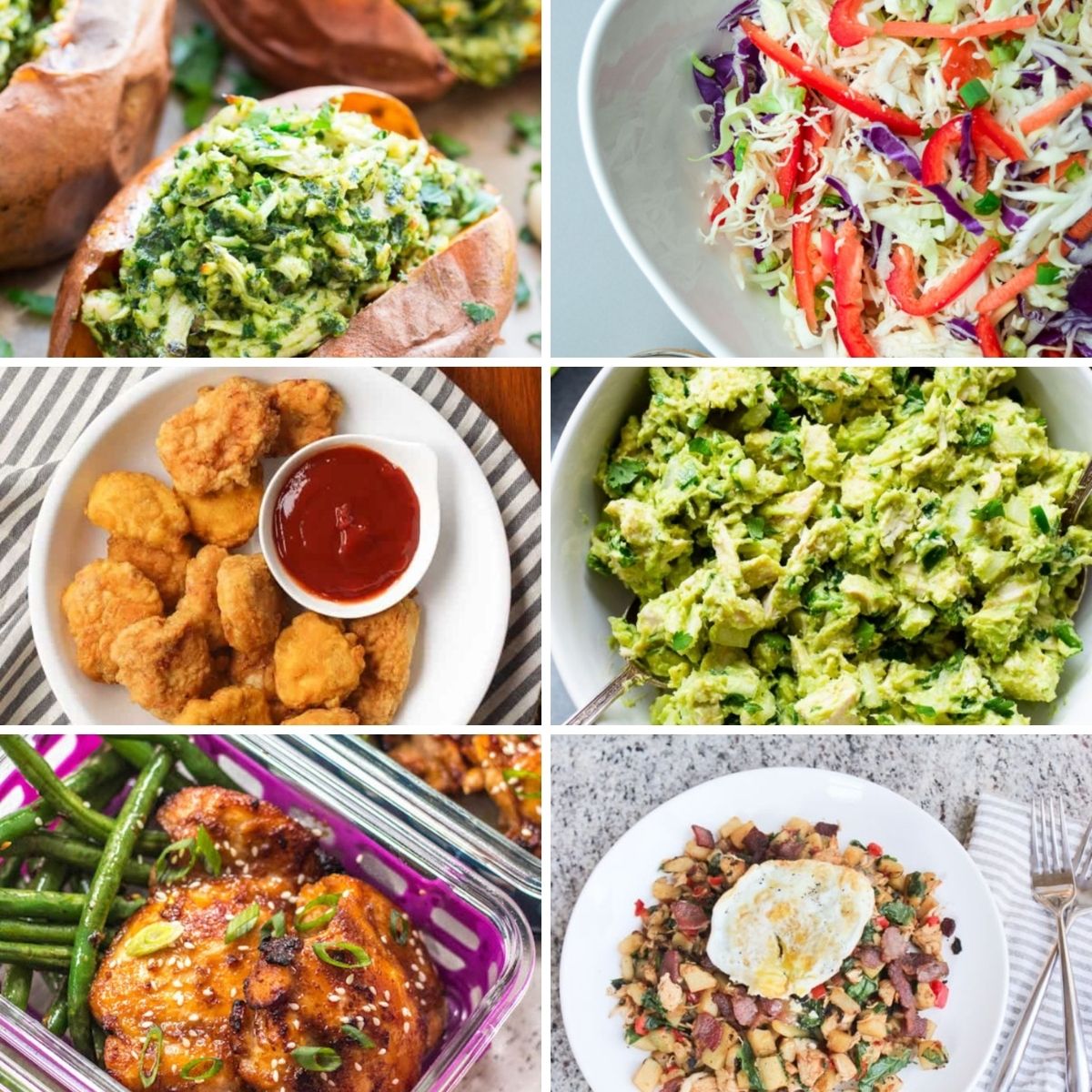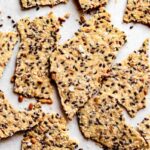Imagine vibrant bowls brimming with nourishing goodness, crafted for those hectic weeknights. Forget tedious meal prep – this guide unveils the secrets to creating satisfying, flavor-packed Paleo dinner bowls in minutes. We’ll explore quick recipes, diverse ingredient combinations, and clever make-ahead strategies, transforming weeknight dinners from a chore into a culinary adventure. Picture colorful vegetables, lean proteins, and healthy fats artfully arranged, a symphony of textures and tastes that will tantalize your senses and fuel your body.
From simple, step-by-step instructions to visually stunning plating techniques, we’ll empower you to conquer the weeknight dinner dilemma with delicious and healthy Paleo bowls. Learn how to maximize flavor and nutritional value with seasonal produce and discover the benefits of meal prepping for a healthier, more balanced lifestyle. This isn’t just about eating; it’s about creating a satisfying and enjoyable culinary experience even amidst a busy schedule.
Paleo Dinner Bowl Make-Ahead Strategies

Crafting delicious and nutritious paleo dinner bowls doesn’t have to be a nightly race against the clock. With a little strategic planning, you can transform weeknight dinners from stressful events into enjoyable, healthy meals. Make-ahead strategies are key to simplifying the process and ensuring you consistently enjoy flavorful, satisfying paleo meals, even on your busiest days.
Make-Ahead Strategies for Efficient Paleo Dinner Bowl Preparation
Three primary make-ahead strategies significantly reduce the time commitment involved in preparing paleo dinner bowls. These strategies involve prepping ingredients well in advance, cooking components ahead of time, and assembling the bowls the night before. By utilizing a combination of these approaches, you can enjoy a wholesome, satisfying paleo dinner without spending hours in the kitchen each evening. This allows for a more relaxed and enjoyable cooking experience, reducing stress and promoting a healthier lifestyle.
Prepping Ingredients in Advance
This strategy focuses on preparing all the raw ingredients before you begin cooking. Think chopping vegetables, measuring spices, and portioning proteins. This dramatically reduces cooking time when you’re ready to assemble your bowls. For example, you can chop a large batch of broccoli, bell peppers, and onions on the weekend and store them in airtight containers in the refrigerator. Similarly, pre-measuring spices for various recipes eliminates the need to search for ingredients during busy weeknights. This organized approach ensures that your weeknight meal preparation is efficient and straightforward.
Cooking Components Ahead of Time
Another effective strategy involves cooking components of your paleo dinner bowls in advance. Roasting a large batch of chicken or sweet potatoes on the weekend, for example, allows you to quickly assemble your bowls during the week. Similarly, cooking grains like quinoa (if you include it in your modified paleo diet) or preparing a large batch of your favorite paleo sauce can significantly streamline the weeknight cooking process. These pre-cooked elements can be stored in the refrigerator or freezer, ensuring you always have quick and healthy options readily available.
Assembling Bowls the Night Before
For ultimate convenience, consider assembling your paleo dinner bowls completely the night before. Layer pre-cooked proteins, vegetables, and healthy fats in individual containers. Store these assembled bowls in the refrigerator and simply grab one and go in the morning or before you leave for work. This method is particularly useful for lunches or quick dinners, ensuring you have a healthy and readily available meal option.
Step-by-Step Guide: Make-Ahead Chicken and Sweet Potato Bowls
This guide demonstrates a make-ahead strategy for a simple yet satisfying chicken and sweet potato bowl.
Step 1: Prep the Ingredients (Sunday)
- Wash and chop 2 lbs of sweet potatoes into 1-inch cubes.
- Cut 1.5 lbs boneless, skinless chicken breasts into 1-inch cubes.
- Chop 1 large onion and 2 cups of broccoli florets.
- Measure out 2 tbsp olive oil, 1 tsp paprika, 1 tsp garlic powder, ½ tsp salt, and ½ tsp black pepper.
Step 2: Cook the Components (Sunday)
- Toss sweet potatoes with 1 tbsp olive oil, ½ tsp salt, and ½ tsp pepper. Roast at 400°F (200°C) for 20-25 minutes, or until tender.
- In a separate pan, sauté the onion in the remaining olive oil until softened. Add the chicken and cook until browned. Stir in paprika and garlic powder. Cook until chicken is fully cooked through.
- Steam or roast the broccoli until tender-crisp.
Step 3: Assemble the Bowls (Monday Morning)
- Divide the cooked sweet potatoes, chicken, and broccoli evenly among four meal prep containers.
Important Note: Ensure all components are thoroughly cooled before storing them in the refrigerator to prevent bacterial growth.
Tip: Add a dollop of your favorite paleo-friendly sauce or a sprinkle of nuts or seeds before serving for extra flavor and nutrients.
Benefits of Meal Prepping for a Busy Lifestyle
Meal prepping offers significant advantages for busy individuals striving for a healthier diet. It reduces the temptation to opt for less healthy convenience foods, saves valuable time during the week, minimizes food waste by utilizing ingredients efficiently, and promotes more mindful eating habits by providing pre-portioned meals. The time invested in meal prepping on the weekend translates into significant time savings and a reduction in stress during the week, allowing for a more balanced and healthier lifestyle. For example, a busy professional might spend an hour or two on Sunday preparing several meals, saving potentially 30 minutes to an hour each evening during the work week. This time can be used for exercise, relaxation, or spending time with loved ones.
Visual Guide
Creating visually appealing paleo dinner bowls is as much about the arrangement of ingredients as it is about the ingredients themselves. A well-composed bowl not only looks delicious but also highlights the textures and colors of your carefully chosen components, enhancing the overall dining experience. This guide will walk you through several plating styles to help you elevate your weeknight meals.
Bowl Selection and Size
The foundation of a stunning paleo bowl is the bowl itself. A shallow, wide bowl allows for a better display of the ingredients, preventing them from being hidden or overcrowded. Consider a bowl with a slightly rustic or organic feel—materials like ceramic or stoneware complement the natural aesthetic of paleo cuisine. Avoid overly deep bowls, which can make the ingredients appear lost and diminish the visual impact. For a single serving, a bowl with a diameter of approximately 8-10 inches is ideal. Larger bowls are suitable for sharing or for bowls with more substantial components.
Layered Bowl Plating Style
This classic approach emphasizes height and visual layering. Begin with a base layer of grains or starches, such as sweet potatoes or quinoa. Next, add a layer of protein—grilled chicken, salmon, or steak—arranged neatly. The third layer might consist of vibrant vegetables like roasted broccoli, bell peppers, and carrots, strategically placed to create a colorful cascade. Finally, a sprinkle of nuts or seeds, and a drizzle of healthy fat, such as avocado oil or a vibrant pesto, completes the look, adding pops of color and texture. Imagine a vibrant sunset reflected in the bowl: the warm oranges and yellows of sweet potatoes, the rich browns of the chicken, the greens of broccoli, all culminating in a visually stunning composition.
Spiral Bowl Plating Style
This method creates a dynamic and visually engaging presentation. Start by placing a mound of your primary protein in the center of the bowl. Then, arrange your vegetables in a spiral pattern around the protein, alternating colors and textures for maximum visual appeal. Imagine a beautiful flower blooming in your bowl, with the protein as the center and the vegetables as the petals. This approach is particularly effective with long, slender vegetables like green beans or asparagus, or with ingredients that offer a gradient of color, such as a rainbow of bell peppers.
Scattered Bowl Plating Style
This style offers a more relaxed and rustic feel. Instead of precise layering or spiraling, ingredients are scattered more freely throughout the bowl. This approach is perfect for showcasing a variety of textures and colors. Imagine a vibrant garden scene—a mix of roasted vegetables, protein, and nuts and seeds, scattered artfully to create a visually appealing, yet unpretentious, presentation. This style allows for a more spontaneous arrangement, emphasizing the natural beauty of the ingredients. Be mindful of not overcrowding the bowl, maintaining a balance between a full and cluttered look.
Conquering weeknight dinners just got easier. With a little planning and these simple techniques, creating delicious and nutritious Paleo bowls becomes a breeze. Remember the key is versatility: experiment with different flavor combinations, plating styles, and make-ahead strategies to find what works best for you. Embrace the vibrant colors, the satisfying textures, and the nourishing goodness of Paleo bowls. Enjoy the journey of creating healthy and delicious meals that will leave you feeling energized and satisfied, even on the busiest of weeknights.
Quick FAQs
Can I substitute ingredients in the recipes?
Absolutely! Many substitutions are possible depending on dietary needs and preferences. Consider alternatives within the same food group (e.g., different vegetables, protein sources).
How long can I store prepped Paleo bowls in the refrigerator?
Prepped ingredients can generally last 3-5 days in the refrigerator. Assembled bowls are best consumed within 1-2 days for optimal freshness and flavor.
Are Paleo bowls suitable for weight loss?
Yes, Paleo bowls can be part of a weight-loss strategy. Focus on portion control and selecting lean protein sources and plenty of vegetables.
What type of bowls are best for serving Paleo bowls?
Choose bowls that are wide enough to showcase the ingredients and deep enough to hold the contents without spilling. Consider materials like ceramic, stoneware, or even sustainable bamboo.


